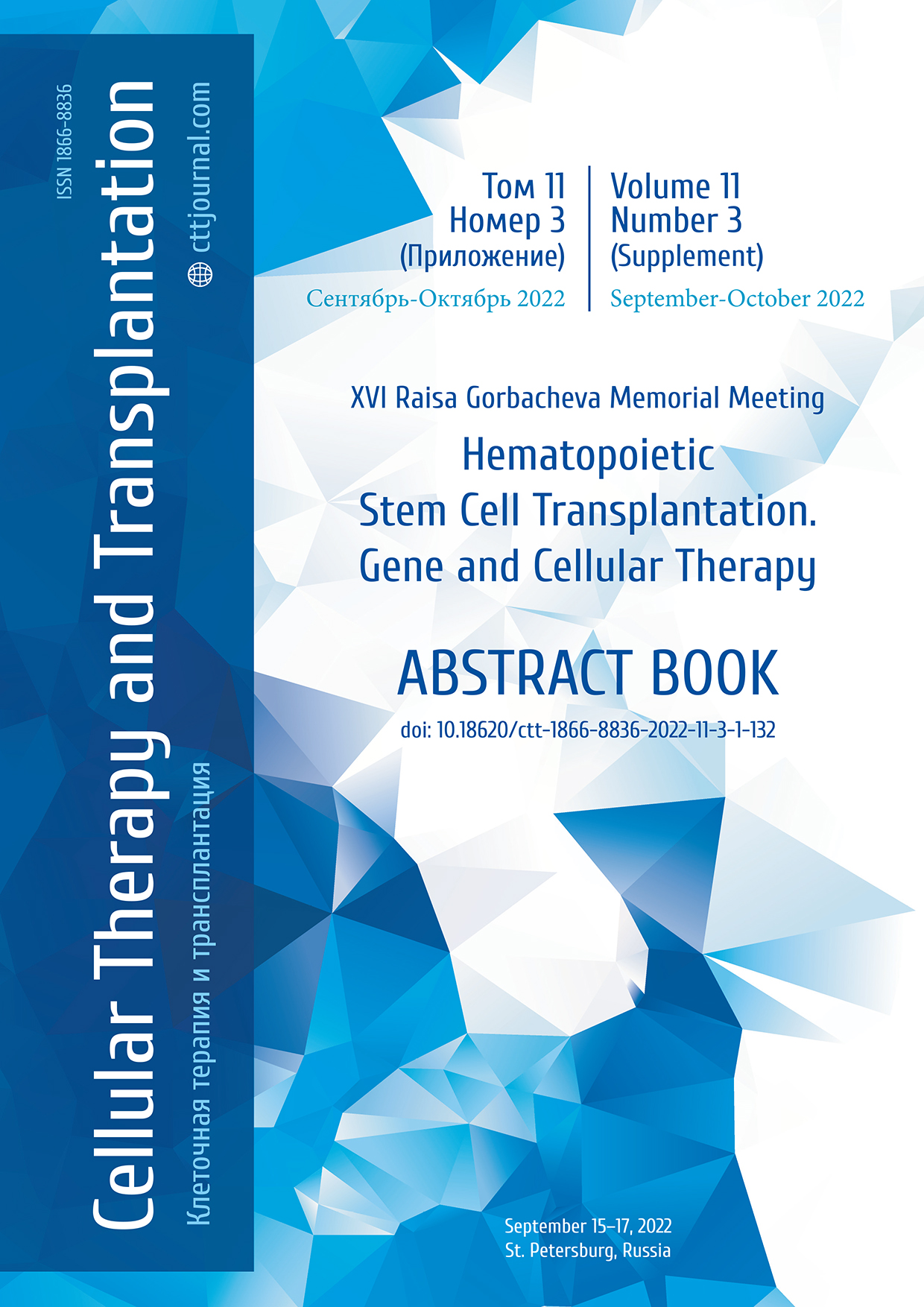PI-05. Invasive fusariosis in patients with hematological and oncohematological diseases
Olga N. Pinegina1, Marina O. Popova2, Yuliya A. Rogacheva2, Irina B. Baranova2, Yulia A. Rodneva2, Alisa G. Volkova2, Ilya Yu. Nikolaev2, Alena N. Zaitseva2, Alexander N. Shvetsov2, Stanislav D. Gorbunkov3, Anna A. Spiridonova1, Oleg V. Goloshchapov2, Tatyana A. Bykova2, Bella I. Ayubova2, Maria V. Bogomolova2, Andrey L. Akopov3, Ludmila S. Zubarovskaya2, Sergey N. Bondarenko2, Alexander D. Kulagin2
1 Pavlov University, St. Petersburg, Russia
2 RM Gorbacheva Research Institute, Pavlov University, St. Petersburg, Russia
3 Research Institute of Surgery and Emergency Medicine, Pavlov University, St. Petersburg, Russia
Contact: Dr. Olga N. Pinegina, e-mail: olga@pinegin.com
Summary
Our aim was to describe the cases of rare invasive fungal disease (IFD), the features of the course and diagnosis of invasive fusariosis in high-risk patients.
Materials and methods
Laboratory diagnosis of IFD was carried out at the Department of Clinical Microbiology (Pavlov University) and included direct light and fluorescence microscopy of biological material with calcofluor white, as well as a cultural study of biological material obtained from patients. Inoculations were made on agar and Sabouraud broth and incubated at 28°C and 35°C until culture growth was obtained. Fungemia was diagnosed using Bactec blood culture flasks (Becton Dikinson). Pathogens were identified by morphological features, as well as by MALDI-TOF mass spectrometry (VitekMS, bioMerieux). The sensitivity to antimycotics was determined using the SenstitreYeastOne test system.
Results
From 2014 to 2022, invasive fusariosis was diagnosed in 3 patients who were treated at RM Gorbacheva Research Institute. Patient S, 17 years old, with hapten agranulocytosis and acute polysinusitis, necrosis of the nasal septum, lower and middle turbinates on the left, lateral wall on the left, and fistula of the paraorbital region on the left (August 2020). Microscopy of biopsy specimens revealed a narrow septate mycelium, branching at different angles, as well as structures resembling phialides with microconidia. Culture: Fusarium solani. Sensitivity – minimum inhibitory concentrations (MICs): anidulafungin >8 mcg/ml, amphotericin B 1 mcg/ml, flucytosine >64 mcg/ml, micafungin >8 mcg/ml, caspofungin >8 mcg/ml, posaconazole >8 mcg/ml, voriconazole 8 µg/ml, itraconazole >16 µg/ml, fluconazole >256 µg/ml. Conducted antifungal therapy – LC ampho B and surgical treatment. After cessation of hapten intake, agranulocytosis resolved and the patient was discharged in a satisfactory condition. Patient K., 46 years old, with progression of resistant AML and pneumonia (September 2020). Investigation of the BAL fluid SARS-Cov2 coronavirus (PCR) was detected, and microscopy revealed a narrow septate mycelium of the fungus with random branching and numerous swellings. Culture: Fusarium solani. MIC: anidul. >8 µg/ml, ampho. B >8 µg/ml, flucyte. >64 mcg/ml, mika. >8 µg/ml, caspo. >8 µg/mL, posa. >8 mcg/ml, vori. >8 mcg/ml, itra. >16 µg/ml, flu. >256 mcg/ml. Thus, the pathogen demonstrated resistance to all antifungals. Despite therapy, the patient died. Patient A., 20 years old, with progression of resistant AML, pneumonia and polysinusitis (August 2021). BAL microscopy revealed a wide non-septate mycelium, branching at a right angle – the mycelium of the Mucorales, however, no growth was obtained during culture. The patient underwent surgical treatment of pulmonary mucormycosis: right-sided pulmonectomy, resection of the ribs and soft tissues of the chest, as well as sinusotomy with the removal of necrotic tissues. Fusarium oxysporum was isolated during mycological examination of the biomaterial of the paranasal sinuses. MIC: anidul. >8 µg/ml, ampho. B at 1 µg/ml, flucyte. >64 mcg/ml, mika. >8 µg/ml, caspo. >8 µg/mL, posa. >8 mcg/ml, vori. 8 mcg/ml, itra. >16 µg/ml, flu. >256 mcg/ml. Antifungal therapy with LA ampho B was effective, but the patient died from the progression of the underlying disease. All patients had blood cultures, but no blood cultures were obtained from any patient.
Conclusions
Invasive fusariosis developed mainly in patients with a resistant course of the underlying disease. The paranasal sinuses were the main affected organ, no hematogenous dissemination was observed. Fusariosis caused by F.solani (FSSC) and F.oxysporum (FOSC) showed a high level of resistance to antifungal drugs. Microscopic signs of fusariosis in the biomaterial were non-specific and required mandatory cultural studies. Treatment of invasive fusariosis included antifungal therapy and surgical treatment; success depended on the control of the underlying disease.
Keywords
Invasive fusariosis, hematological and oncohematological diseases, paranasal sinuses, surgical treatment, resistance.


